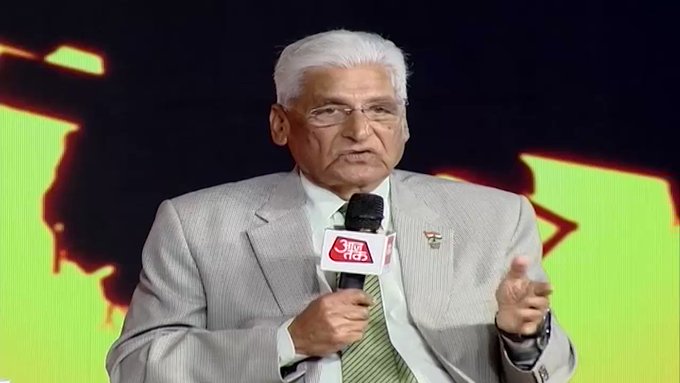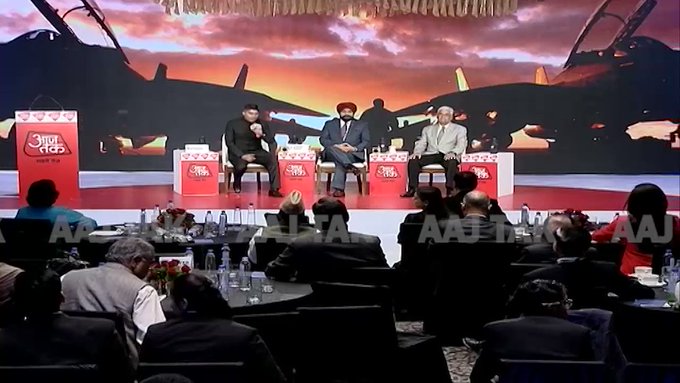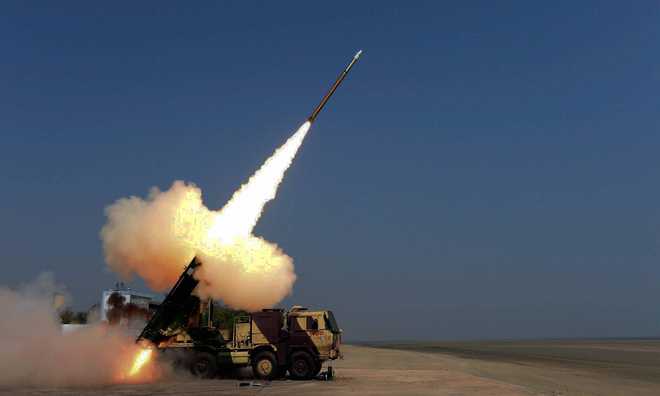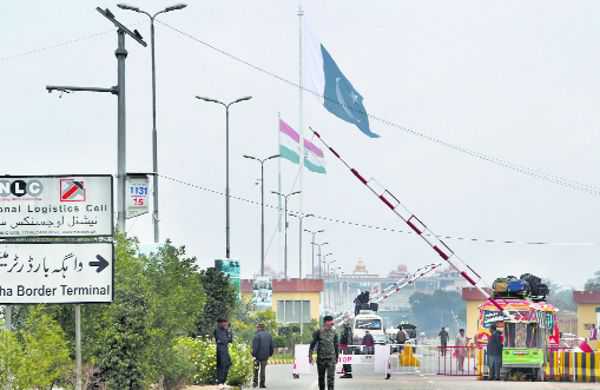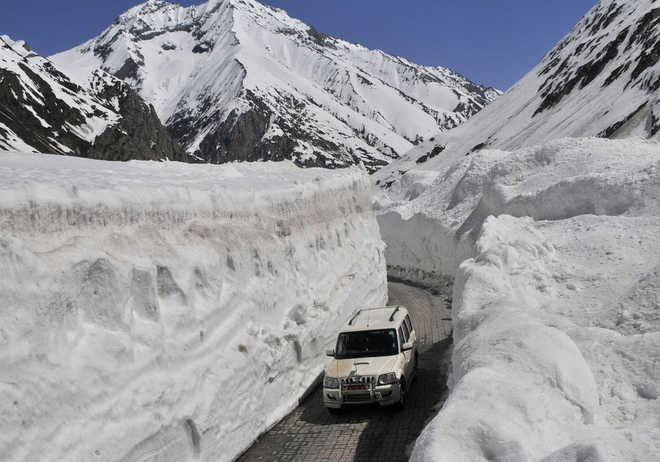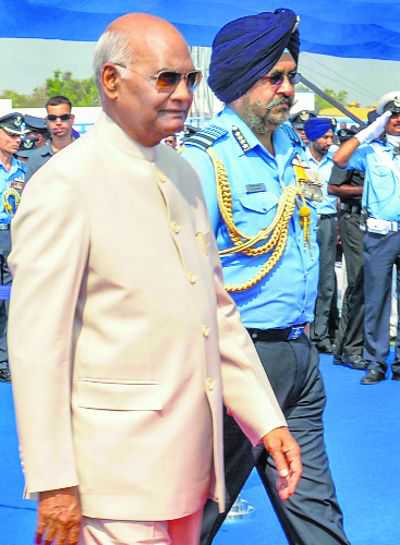ndia must recalibrate its approach, to enable a firmer and enduring outreach, to the populace, as also the institutions of Afghanistan. The Afghan National Army and National Police, who are in the forefront, despite all odds, need a more robust support. Legitimate Afghan national aspirations must be supported far more energetically.
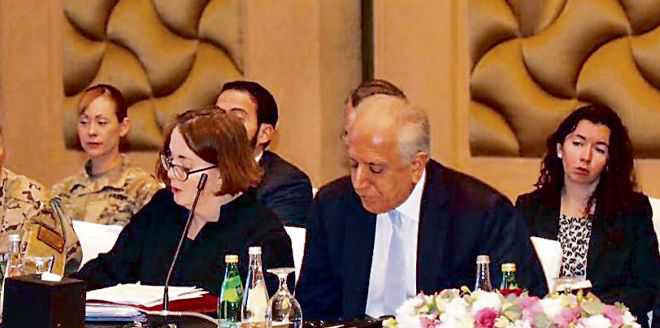
Lt-Gen Sanjiv Langer (retd)
Former Deputy Chief of Armed Forces
While normalcy continues to elude Afghanistan, a web of initiatives is under way. Negotiations of US envoy Zalmay Khalilzad and the Taliban are reportedly making progress. Stand-alone negotiations with Afghans in Moscow are being conducted. Pakistan is sparing no effort to remain significantly central to the outcomes. Two aspects, however, in all these are startling.
First, is the absence of the Afghan Government from any of the negotiations, as though there is a negation of the last 18 years of the constitutional process.
Secondly, the statement of the NATO chief that the war cannot be won militarily, but the situation needs a political solution, seems surreal in the light of the security situation in Afghanistan.
Taliban attacks in March 2019 — March 11 on the Army: 16 killed and 40 captured in Herat; March 7 on a presidential candidate in Kabul, leaving three dead; March 6: 17 personnel of a construction company killed; March 1 in Helmand province: 25 Army personnel dead. The UN has recorded that 2018 was the deadliest year since 2009 for civilian casualties.
After almost 18 years in Afghanistan, the US, confronted with the consequential outcomes of its wavering policies, seeks to change tack and sail away. Moscow, on the other hand, wants to assert that it is back in the game, and as Minister Sergei Lavrov stated, resents US monopoly in the peace talks. The Afghan authorities also want an end to the foreign military presence, but as Minister Abdullah Abdullah says, the military presence is essential to win the war. This is a view that can hardly be faulted. In contrast, Pakistan seeks to nurture an outcome that will give it continued centrality, and fully marginalise India. Notwithstanding the statement of the Pakistan Foreign Minister last year, acknowledging India’s role, it is the Pakistan Army and ISI that are driving the Afghan project.
What is germane in this whirlpool is the strategic outcomes that will impact Afghanistan and India. Historical and socio-cultural linkages apart, for India the air bridge through Kabul, our initiatives in and around Afghanistan, and the considerable Afghani diaspora in India give Afghan issues significant credibility. Indian reconstruction and humanitarian aid is considered by the population to be most effective and has generated goodwill. Stability and normalcy in Afghanistan have importance for India.
Pakistani design in the Af-Pak region, however, is a major consideration. Pakistan has been unable to integrate its North West Frontier (erstwhile NWFP, now Federally Administered Tribal Areas, FATA) since Independence. Fiercely independent and socio-culturally distinct, convergence of population across the infamous Durand Line in the border provinces has remained inviolate.
Afghanistan, for its part, has had such limited opportunities for integration, that the Af-Pak region which was a socio-cultural realism, is today a ‘Geo-Security Actuality’. Pakistan’s windfall came when it became the bridgehead and frontline state for the US campaign against the Soviet occupation, predicated on support to the Afghan Mujahideen. Pakistani ISI had taken proactive steps as far back as 1974.
However, momentum was gained when the US’ covert engagement with the Mujahideen commenced in March, 1979. Afghan refugees and the convergence of Pakistani, US and Mujahedeen priorities gave privileged access and unique significance to Pakistan. Synergised with President Zia’s agenda, terrorist nurseries were awash with recruits, weapons, and sustained finance, all of which facilitate Pakistani design to date. Despite the US vagaries, Pakistan has tenaciously furthered its insidious interests.
It is, therefore, not surprising that Pakistan was indispensable to the Mujahedeen and later Taliban led by the Quetta Shura. It is today a facilitator and exploiter, while simultaneously being subjected to attacks from that region. On the one hand, it released Mulla Barader, co-founder of the Taliban, from a Pakistani jail last October, to participate in the talks with the US, and on the other, at the same time, it is viciously targeted by the Pakistan-centred Taliban.
Consequently, the strategic space that Pakistan seeks is, first, based on control and influence over this turbulent region at any cost, through any stratagem to ensure its own security. Secondly, the Pashtun dependency ensures its influence in Kabul. This also falls in line with its Sunni-centric Islam. Thirdly, this region is ideal for parking Pakistan Army proxies. Fourthly, it gives it the ability to attack Indian-created assets as well as entities in Afghanistan. Fifthly, the Pakistan deep state seeks the control from the opium trade amounting to a massive $4.1 to 6.6 billion. Sixthly, given the ongoing negotiations, Pakistan sees itself well poised to fill in the impending vacuum in the politico security space created by the US and foreign military departure. Caught in the vortex are the Afghan populace, who are denied peace, ravaged by conflict, and find their futures compromised.
The present negotiations with the Taliban originate from the politico-military developments of 2011-2014. In the five-phase US, NATO, ISAF (International Security Assistance Force), transition support plan, termed ominously INTEQAL, its terminal Phase 4 and 5 (2013-14) targeted the integration of the eastern provinces. This left the most conflict-ridden and difficult region for the end.
Simultaneously, President Obama announced a troop surge, bringing the combined strength of 48 nations to 1,32,500, in June, 2011, while also stating that the final drawdown would commence and terminate (initially) by end-2014. In strategic terms, these were a set of contradictory parameters creating operational dichotomy that would encourage poor outcomes.
So has been proved, by the extant situation. The troops, though downsized, could not withdraw while ISAF claimed it had completed its mission by end-2014. Contrary to plans, however, we find the Taliban capturing legitimacy and occupying unassailable politico-military space. Another fact must not escape our attention: the Afghan National Army and National Police were created. The ANA was, however, only equipped for counter-terrorism and counter-insurgency. It was denied the capability of a conventional Army. It cannot retake the Taliban-dominated areas, or defend its borders.
As events hurtle on, what pre-cognition is possible? The US success in crafting a suitable deal is distant. Outcomes of Moscow’s efforts presently are indeterminate. The Taliban is unlikely to have a long-term commitment to any player except itself. Internally, it is far from monolithic and can diverge or factionalise, based on issues, leadership and tribes. They will, however, continue to expand and firm in on their geographic, security and political spaces. The elements in their shadow, Daish/ISIS, Al Qaida and the new Avatar ISKP (Islamic State Khorasan Province), will reassert in time. Pakistan’s orchestrated strategy rebounded viciously post its assaults on the Lal Masjid, in July, 2007. While its influence and agenda with the Afghan Taliban is likely to endure, it will continue to be targeted by the Pakistan-centred Taliban, whose resilience despite full-scale Pakistan air-land attacks is remarkable.
For India, we need to recalibrate our approach, to enable a firmer and enduring outreach, to the populace, as also the institutions of Afghanistan. The ANA and the ANP, who are in the forefront, despite all odds, need a more robust support. Legitimate Afghan national aspirations must be supported far more energetically. Facing endemic insecurity, with insidious interests across the border, driving and sustaining political duality and Taliban centrality, the plight of the Afghan populace remains challenged.
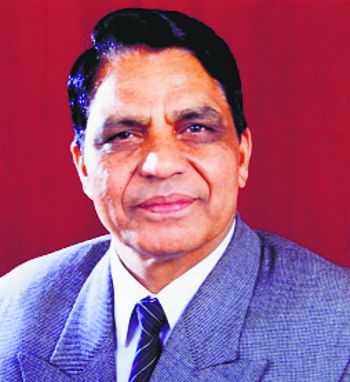
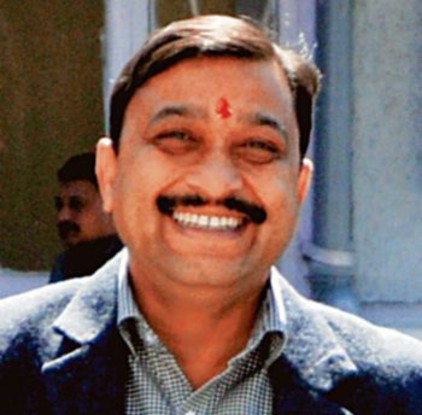





















































 A contingent of Indian Army’s parachute regiment, including special forces, doubles past the saluting dais on Republic Day in Delhi. (Photo: PTI)
A contingent of Indian Army’s parachute regiment, including special forces, doubles past the saluting dais on Republic Day in Delhi. (Photo: PTI) Procurement of arms from the US for the Indian Army SF is still in the pipeline. (Representational image: Reuters)
Procurement of arms from the US for the Indian Army SF is still in the pipeline. (Representational image: Reuters)

